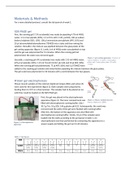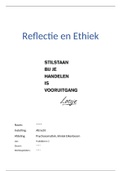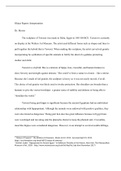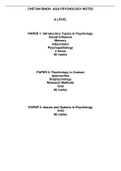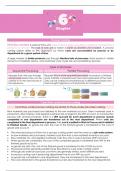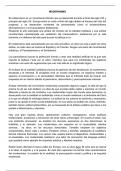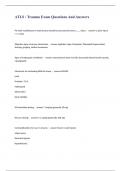Materials & Methods
For a more detailed protocol, consult the lab journal of week 1.
SDS-PAGE gel
First, the running gel (7.5% acrylamide) was made by pipetting 4.78 ml MiliQ
water, 2.5 ml acrylamide (30%), 2.5 ml Tris-HCl (1.5M, pH 8.8), 100 µl sodium
dodecyl sulphate (SDS, 10%), 100 µl ammonium persulphate (APS, 10%) and
20 µl tetramethylethylenediamine (TEMED) into a tube and then mixing the
solution. Hereafter, the mixture was pipetted between the glass plates of the
gel casting apparatus (figure 1). Lastly, 1ml of MiliQ water was pipetted on top
and the gel was polymerized for 15 minutes. When the running gel had
polymerized, the water was removed again.
Figure 1: gel casting apparatus. Consists of
Secondly, a stacking gel (4% acrylamide) was made with 2.95 ml MilliQ water, 2 green holders, 2 combs, 2 inner glass
670 µl acrylamide (30%), 1.25 ml Tris-HCl (0.5M, pH 6.8) and 50 µl SDS (10%). plates and 2 outer glass plate (10 wells,
1.5mm)
When the running gel had polymerized, 75 µl APS (10%) and 5 µl TEMED were
added to the stacking gel solution and mixed before pipetting the mixture between the glass plates.
The gel could now polymerize for 30 minutes with a comb between the two glasses.
Protein gel electrophoresis
Mouse muscle samples of the extensor digitorum longus (EDL) and soleus (S)
were used for this experiment (figure 2). Both samples were prepared by
heating them to 95oC in a thermomixer. The samples had to be placed on ice
until they could be loaded on the SDS-PAGE gel.
First, the gel was placed in the electrophoresis
apparatus (figure 3). The inner compartment was Figure 2: Mouse skeletal muscles.
Source: Shah et al. (2001)
filled with electrophoresis running buffer (10x =
30.3 g Tris, 10 g SDS, 144 g glycine pH 8.3). Subsequently, the comb was
removed and the wells of the gel were flushed with running buffer.
After this, the bottom of the apparatus was also filled with
electrophoresis running buffer. Finally, 10 µl of the samples were
loaded into the wells according to the gel layout in table 1. An
electrophoresis was then performed by connecting the apparatus to a
Figure 3: Electrophoresis
apparatus power supply and letting the gel run for 60 minutes.
Table 1: Gel layout.
Well 1 2 3 4 5 6 7 8 9 10
Content Laemmli Laemmli Laemmli Protein EDL EDL S S Laemmli Laemmli
buffer buffer buffer marker buffer buffer
Volume 10 µl 10 µl 10 µl 3 µl 10 µl 10 µl 10 µl 10 µl 10 µl 10 µl
For a more detailed protocol, consult the lab journal of week 1.
SDS-PAGE gel
First, the running gel (7.5% acrylamide) was made by pipetting 4.78 ml MiliQ
water, 2.5 ml acrylamide (30%), 2.5 ml Tris-HCl (1.5M, pH 8.8), 100 µl sodium
dodecyl sulphate (SDS, 10%), 100 µl ammonium persulphate (APS, 10%) and
20 µl tetramethylethylenediamine (TEMED) into a tube and then mixing the
solution. Hereafter, the mixture was pipetted between the glass plates of the
gel casting apparatus (figure 1). Lastly, 1ml of MiliQ water was pipetted on top
and the gel was polymerized for 15 minutes. When the running gel had
polymerized, the water was removed again.
Figure 1: gel casting apparatus. Consists of
Secondly, a stacking gel (4% acrylamide) was made with 2.95 ml MilliQ water, 2 green holders, 2 combs, 2 inner glass
670 µl acrylamide (30%), 1.25 ml Tris-HCl (0.5M, pH 6.8) and 50 µl SDS (10%). plates and 2 outer glass plate (10 wells,
1.5mm)
When the running gel had polymerized, 75 µl APS (10%) and 5 µl TEMED were
added to the stacking gel solution and mixed before pipetting the mixture between the glass plates.
The gel could now polymerize for 30 minutes with a comb between the two glasses.
Protein gel electrophoresis
Mouse muscle samples of the extensor digitorum longus (EDL) and soleus (S)
were used for this experiment (figure 2). Both samples were prepared by
heating them to 95oC in a thermomixer. The samples had to be placed on ice
until they could be loaded on the SDS-PAGE gel.
First, the gel was placed in the electrophoresis
apparatus (figure 3). The inner compartment was Figure 2: Mouse skeletal muscles.
Source: Shah et al. (2001)
filled with electrophoresis running buffer (10x =
30.3 g Tris, 10 g SDS, 144 g glycine pH 8.3). Subsequently, the comb was
removed and the wells of the gel were flushed with running buffer.
After this, the bottom of the apparatus was also filled with
electrophoresis running buffer. Finally, 10 µl of the samples were
loaded into the wells according to the gel layout in table 1. An
electrophoresis was then performed by connecting the apparatus to a
Figure 3: Electrophoresis
apparatus power supply and letting the gel run for 60 minutes.
Table 1: Gel layout.
Well 1 2 3 4 5 6 7 8 9 10
Content Laemmli Laemmli Laemmli Protein EDL EDL S S Laemmli Laemmli
buffer buffer buffer marker buffer buffer
Volume 10 µl 10 µl 10 µl 3 µl 10 µl 10 µl 10 µl 10 µl 10 µl 10 µl

